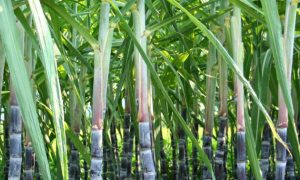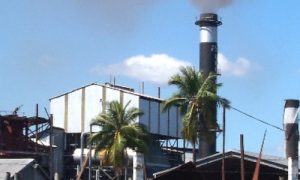Sugarcane cultivation incurring massive environmental and human costs: CEJ

Analysis of data collected by a Centre for Environmental Justice (CEJ) research team has revealed a massive loss of forest cover in Sri Lanka, brought about by the acquisition of land for cultivating sugarcane as well as for the establishment of human settlements. The analysis also discloses that waves of human migration had occurred from different parts of the island as a result of the establishment of these sugarcane factories in areas coming within the study.
Key among the research findings is that the destruction of forest cover has led to climatological changes in the areas of study. This is observable in rising temperature levels and anomalies in annual rainfall patterns.
On the other hand, concerns are raised with regard to the disposal of waste generated by the processing of sugarcane, in the form of solid waste and untreated waste-water. Coupled with that is the use of fertilizers for cultivating sugarcane which has been produced using the waste materials.
The objective of this study is to understand the environmental, social and economic impacts the sugarcane industry may have had in the selected districts. To this end, areas surrounding three sugarcane factories, namely, Pelwatte, Sevanagala and Hingurana were selected.
The study gathered information from villagers who are or have been sugarcane farmers or employees at the sugarcane factories, as well as from key informants, such as, Grama Seva officers, wildlife officers, agricultural advisers, environmental activists and other notable individuals in the selected areas, using questionnaires and semi-structured interviews.
The study revealed that the failure to properly dispose of these waste material has led to the contamination of surface and ground water bodies while leading to the pollution of the air, which was evident in the foul stench that pervaded most of these areas. Meanwhile, the use of fertilizers which were manufactured out of sugarcane waste also impacts soil quality, as well as the insects which are essential for the growth of crops.
Another key issue that was raised in this study is the contribution of sugarcane cultivation to the aggravation of the human-elephant conflict in the selected areas. It was observed that most of the land acquisitions for cultivating sugarcane have been carried out with less regard for elephant pathways.
The study could also identify some health impacts the sugarcane industry may have on the inhabitants of these areas. These impacts include kidney diseases, due to water pollution, skin diseases and the aggravation of asthmatic conditions.
The study also noted some socio-economic outcomes of the sugarcane industry. It was observed that sugarcane has helped improve the basic living conditions of the farmers while providing them a steady income in adverse times, such as, the Covid-19 pandemic. However, it was also revealed that there is a heavy dependence of the sugarcane farmers on sugarcane farming and factories which makes them economically less independent.
The study has recorded some incidents of strife between the unions of the sugarcane farmers and the factory management in areas, such as, Hingurana. Finally, this study also outlines some of the adverse outcomes sugarcane farming can have on the cultivation of other crops, such as, paddy, which range from reduction of soil quality to drying up of water resources.

















